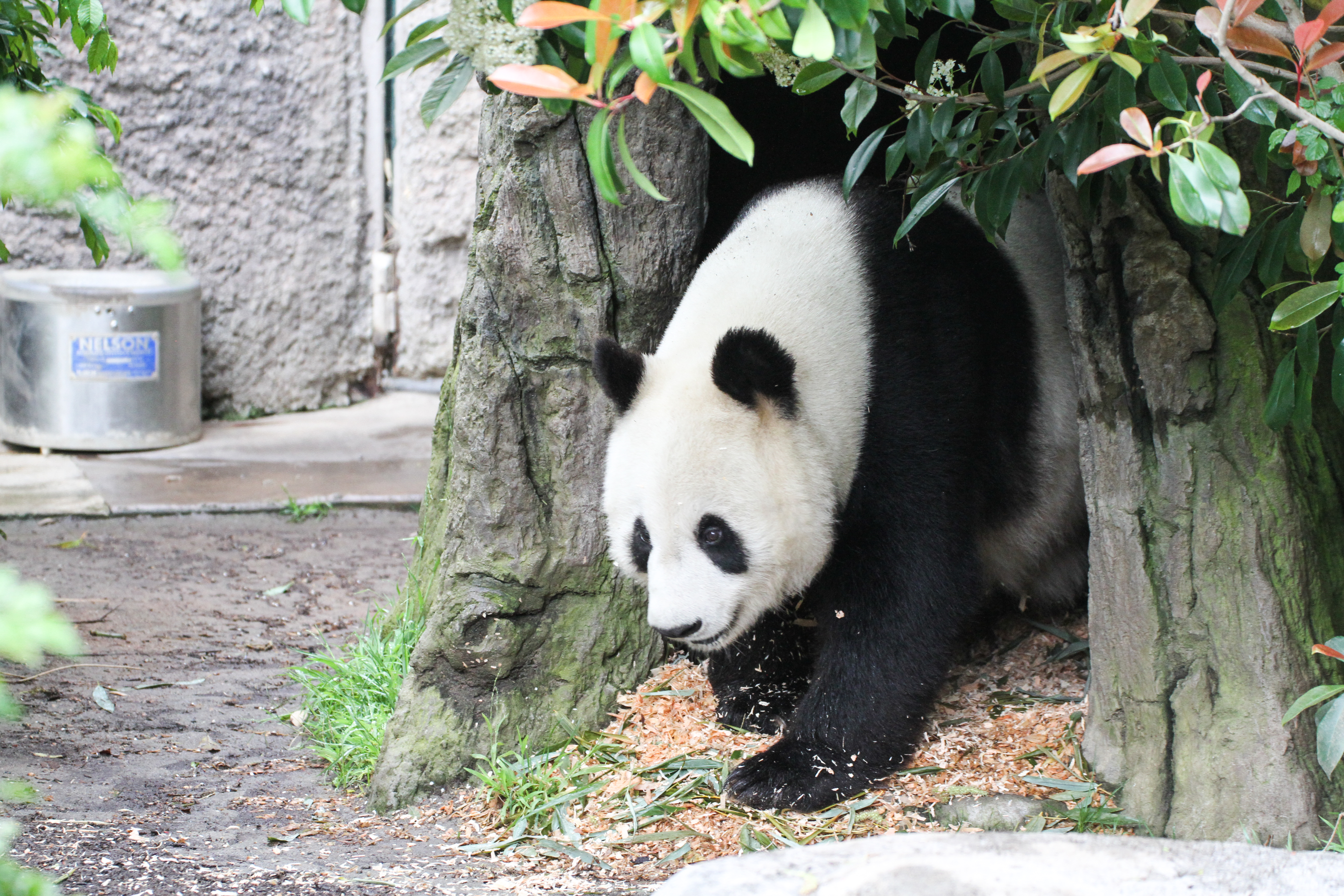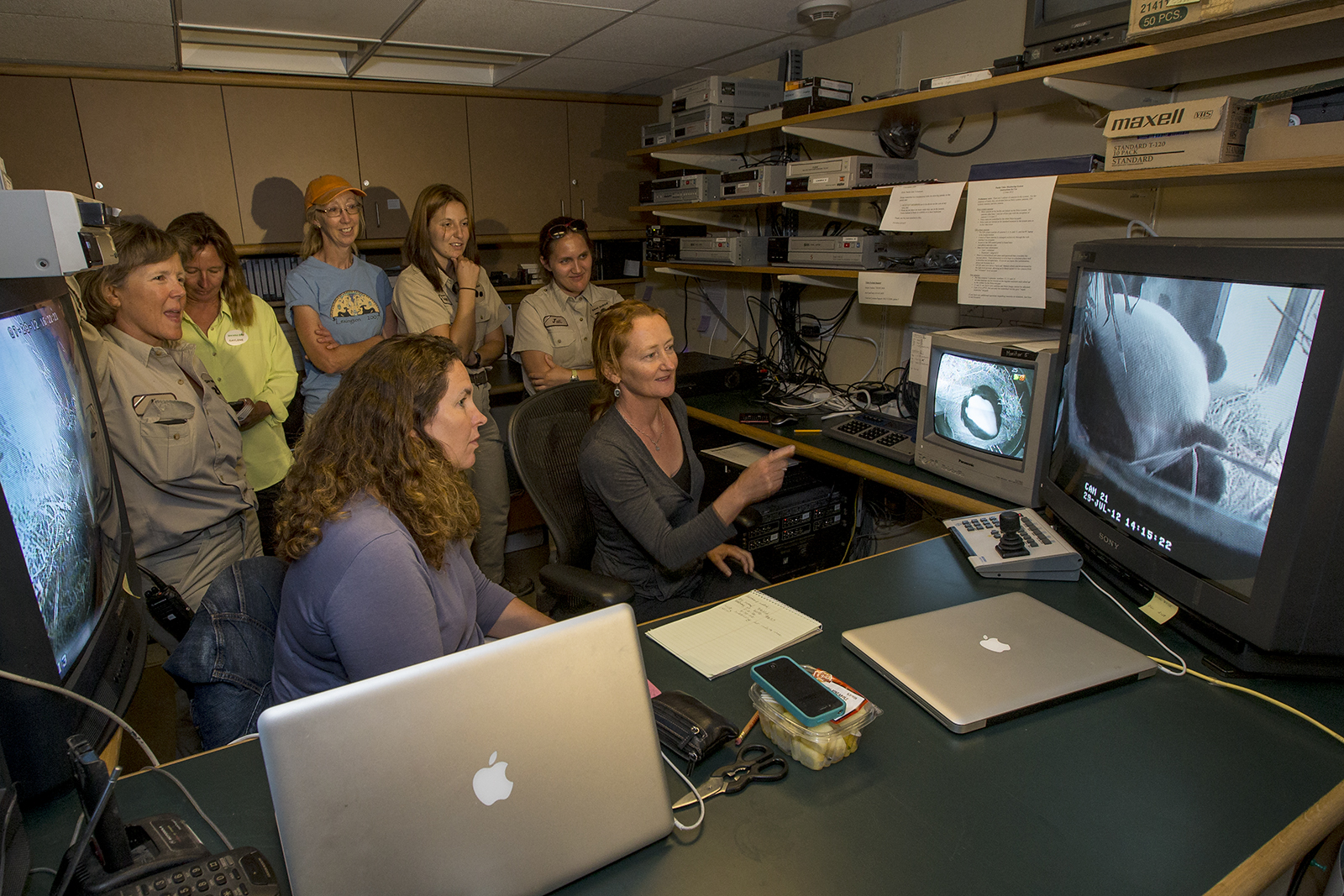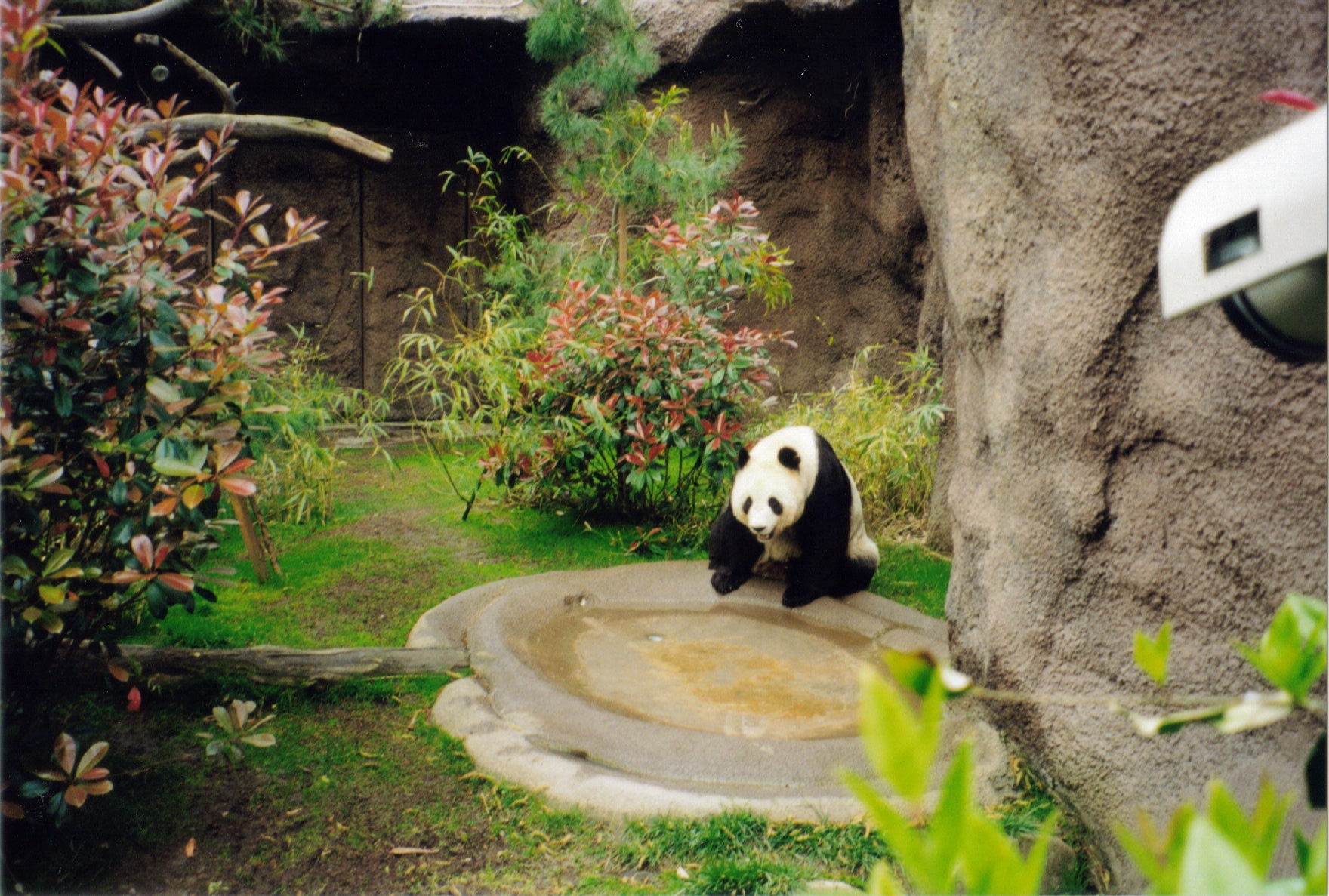Tracking Pandas in Foping Nature Reserve
Ron Swaisgood, San Diego Zoo’s director of Applied Animal Ecology is at the Foping Nature Reserve an wrote the following update:
It’s morning, and I’m happy to see blue sky and feel the warm sun. I’m back in China’s Foping Nature Reserve. I’ve been coming here since 2006, and it feels a little bit like a second home for me. Anytime I put on a pair of Vibram-sole boots and go out exploring in the name of research it feels like home. This is why I took on this line of work—not all those emails and meetings waiting for me back in San Diego. John Muir once said, “Going to the woods is coming home.” I’m with you, John. Looking up at the mist-shrouded mountains and reveling in the grandeur, I feel a bit like I’m channeling Muir.
Searching for panda feces
Later, with warm rice porridge sloshing around in my belly, we’re “on the trail” of a panda. She’s wearing a radio collar, so chances are good we’ll be able to find her. Without the collar, finding a panda would be only slightly more likely than being struck by lightning. We listen to the cadence of the receiver, pointing us off the trail. Now, let the bushwhacking begin. In the bamboo forests of China’s mountains, bushwhacking reaches a new level. It’s a bit more like tunneling a la subterranean mole, so thick is the bamboo. We continue for a couple of miles like this, occasionally emerging from the bamboo bramble to cross a stream or ridge.
Two prizes reward our effort: panda feces!
My nearly half-century-old legs carry me along all right, but the going is tough. These mountains are steep. Going down a particularly steep patch, my boot tip catches on an inconveniently disguised branch, and I’m airborne—for about five feet. Thankfully nothing short of a missile (or a panda) can penetrate the bamboo, and I crash gently, though without much grace, into the bamboo thicket. I’m tempted to go on panda-style, crawling on all fours. Compared to me, they seem built for this habitat. Low to the ground, insulated in thick, coarse, waterproof fur, they must barrel through here impervious to the insults I receive.
Eventually, we are rewarded with louder ticking from the receiver and begin to see fresh signs of panda—a munched stem here, a footprint there. She’s around. We’ll find her. Then, at last, there she is. In plain sight. Well, a few square inches of her that you can see if you stand in just the right place and squint. Yes, that black bit there. Oh, and there’s some white. I think she’s eating.
Wei Wei collects bamboo samples.
Fortunately, for the sake of science, we return to camp with more than just these fleeting glimpses. We also find two cherished packages, loaded with data—panda droppings! They’re fresh, so they’re certainly hers. Pandas don’t often co-inhabit the same site, being the loners they are. But we’ll check the DNA just in case. A perfect record of everything she’s eaten is also in these golden nuggets (really a rather drab brown, sometimes a little green). Wei Wei, a graduate student with our partner institution, the Chinese Academy of Science Institute of Zoology—will have his work cut out for him when he gets back. He’ll dry it, pick it apart, count the stems and leaves eaten, grind them up, and subject them to a battery of tests to see just what kind of good stuff the panda is getting out this. We take a sample of nearby bamboo, too, for comparison purposes. How these pandas get sustenance out of this I can’t help but wonder.
Just another day in the life of panda tracking….
Source: San Diego Zoo









